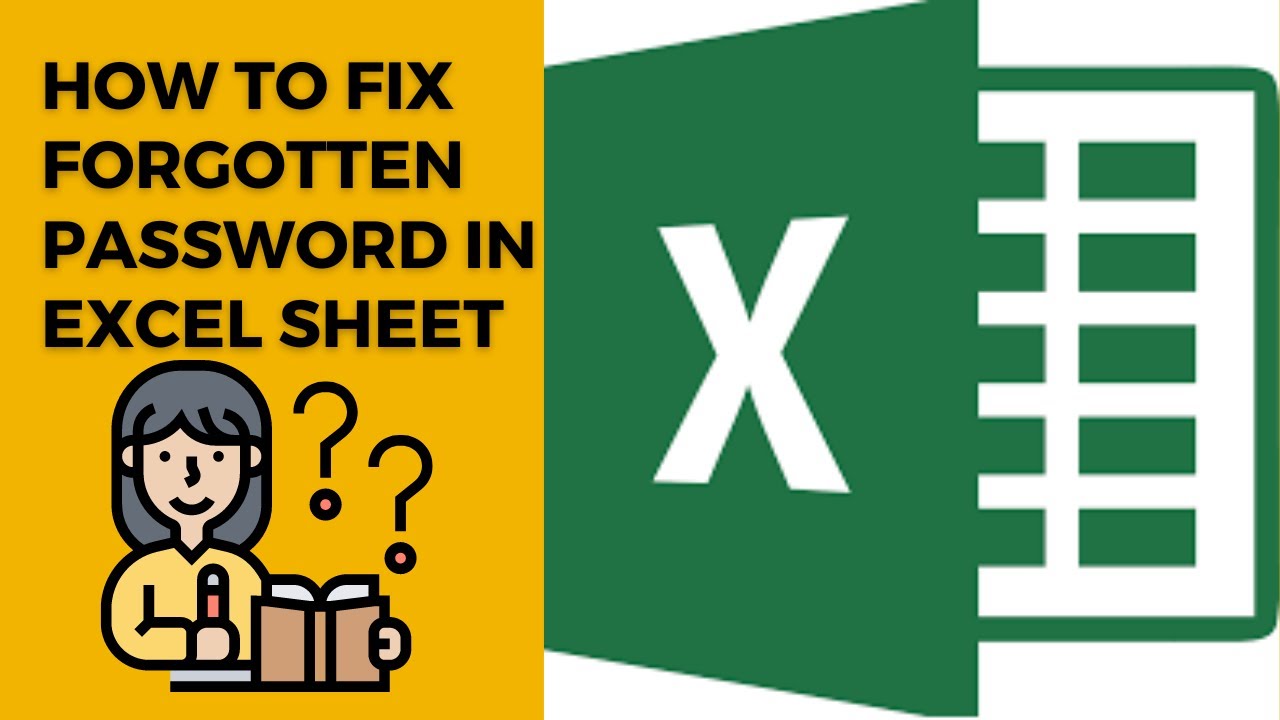5 Easy Ways to Unlock Excel Protected Sheets

The Importance of Protecting Excel Sheets

Excel is one of the most widely used tools for data analysis and financial tracking. The ability to protect sheets is vital for maintaining data integrity, preventing unauthorized changes, and ensuring data security. This feature is particularly useful in business environments where sensitive information is at stake. However, there might be instances where you need to access or unlock a protected sheet for legitimate reasons like data recovery, analysis, or for applying advanced functions that require editing.
1. Using the "Unprotect Sheet" Option

If you have the password:
- Go to the Review tab.
- Select Unprotect Sheet.
- Enter the password when prompted.
👁️ Note: This method works only if you know the password or have authority to unlock the sheet.
2. VBA Macro Method for Unlocking Sheets

Visual Basic for Applications (VBA) in Excel allows you to write macros to automate tasks. Here’s how you can use VBA to unlock a sheet:
- Press ALT + F11 to open the VBA editor.
- Go to Insert > Module.
- Copy and paste the following code: ```vba Sub UnprotectSheet() Dim pwd As String On Error Resume Next For Each ws In Worksheets ws.Unprotect Password:=pwd Next ws End Sub ```
- Close the VBA editor and run the macro with ALT + F8, then select UnprotectSheet.
💡 Note: This method may not work on sheets protected with very strong passwords or those using advanced protection methods.
3. Using Free Tools to Crack Excel Passwords

Various software tools are available online designed to crack or bypass Excel passwords:
- Download a reputable tool like Excel Password Recovery or iSeePassword.
- Install the tool on your computer.
- Follow the tool's instructions to select your Excel file and recover or bypass the password.
⚠️ Note: Be cautious when downloading tools; ensure they are from legitimate sources to avoid malware risks.
4. Accessing Hidden or Very Hidden Sheets

Sometimes, data is hidden rather than password-protected. Here’s how to reveal it:
- Open VBA (ALT + F11).
- Find your workbook in the Project Explorer (left pane).
- Expand it to see all sheets. Look for sheets marked (V)Hidden or Very Hidden.
- Right-click the sheet name, select Properties, and change the Visible property to -1 - xlSheetVisible.
🗝️ Note: This method does not unlock the sheets but makes them visible for viewing and editing.
5. Third-Party Services for Password Recovery

If the above methods fail, consider using professional services that specialize in password recovery:
- Services like Passcovery or Elcomsoft can recover lost or forgotten Excel passwords.
- These services often use advanced algorithms to decrypt files safely.
🏢 Note: Use these services only if you have the legal right to access the data or if you need to recover your own password.
To wrap up, Excel’s protection features are essential for data security, but there are legitimate reasons and methods to unlock protected sheets. Here are key takeaways:
- Password: If available, the “Unprotect Sheet” option is the simplest way to unlock.
- VBA: A powerful tool for bypassing sheet protection when you have access to VBA.
- Software Tools: Free or paid tools can crack passwords if needed, but beware of malware risks.
- Sheet Visibility: Sometimes sheets are just hidden, not locked; VBA can help reveal them.
- Professional Services: For complex protection scenarios, specialized services can be a solution.
When dealing with protected Excel sheets, always consider the ethical implications and ensure you have the right to access or modify the data.
Is it legal to unlock an Excel protected sheet?

+
Unlocking an Excel sheet is legal if you have the authority or it’s your own document. Unauthorized access can be illegal and unethical.
What if I’ve forgotten the password to my Excel sheet?

+
You might try methods like VBA macros or third-party tools to recover or bypass the password. If those fail, consider professional password recovery services.
Can I prevent others from unlocking my Excel sheet?

+
To enhance protection, use a strong password, consider file-level encryption, and be aware that very advanced security measures can be more resistant to cracking attempts.



